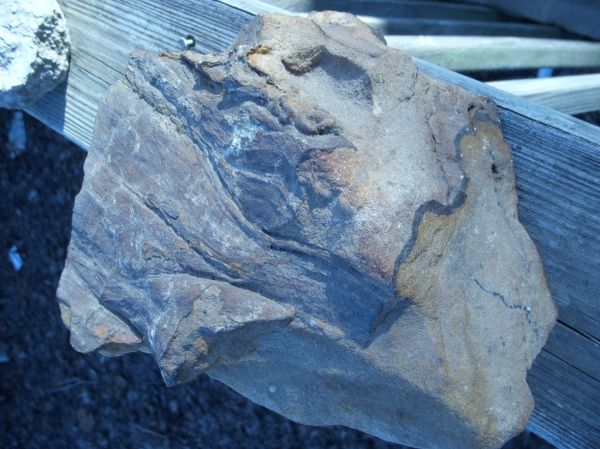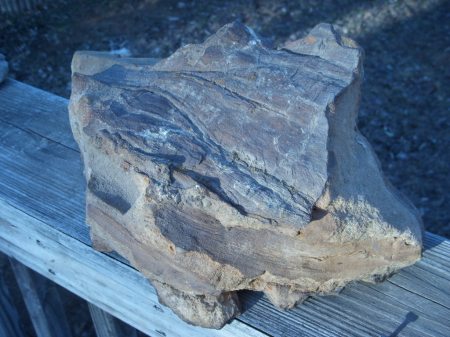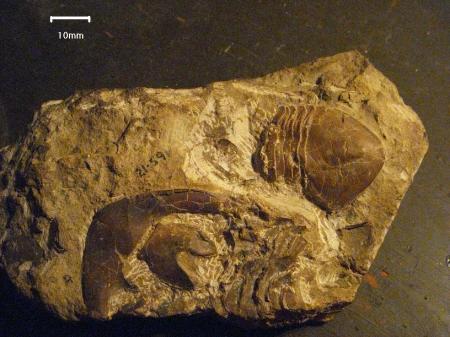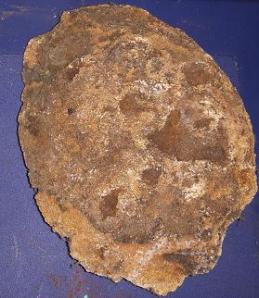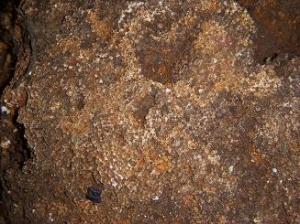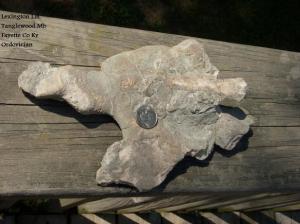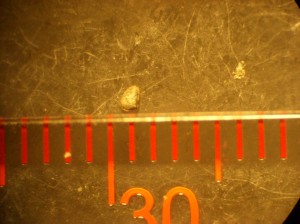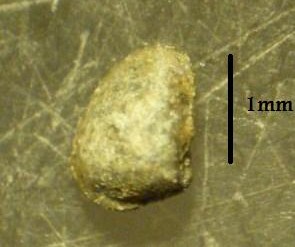Soon to return.
Lawyers, be damned!
August 21, 2013Cubano Fiesta: Ropa Vieja
February 27, 2012Lunch at the brother’s house… one should taste his wife’s cooking!
Long Time No Posts
February 27, 2012Last year, upon advice of counsel, I stopped blogging. I will be back soon.
Wow! I noticed that it was one year to the day!
On An Old Beach
February 27, 2011Years ago I was camping with a friend along the dissected edge of the Appalachian Plateau. That week we were experiencing some of the coldest weather in history for this part of the country. It was the second week of Jan. 1984 and the temp had dropped to -27°F (-33°C). On old guy that lived near our camp site smelled the smoke from our fire, and was amazed that anyone would be out in that kind of weather. So, he came along to investigate.
After setting around the fire and chit chatting for a while, he was impressed that we were cold weather enthusiasts and not just a bunch of silly kids out playing in the woods. He then took us on a tour of his land and showed us some of the sites that he thought were interesting.
One of those sites was along the base of a large cliff. In it, there was a fossil log of a lycopsid that was about 3 or 4 meters in length. One end of the log was nearly dislodged from the rest, so I ask if I could have the fossil. He knew of my enthusiasm for fossils from our earlier discussions, so he let me pry the small chunk from the rest of the log.
The base of the cliffs in the area are Mississippian limestones(Newman Fm.) capped by the sandstones and conglomerates of the Pennsylvanian Breathitt Fm. There is a nice disconformity between the two units; in some places with a few meters of relief within a relatively short distance.
I was already packing heavy due to the weather, and we were a couple of km back into the woods, but I wasn’t going to let nature reclaim this thing.
For scale, the board under the fossil is about 14 cm wide.
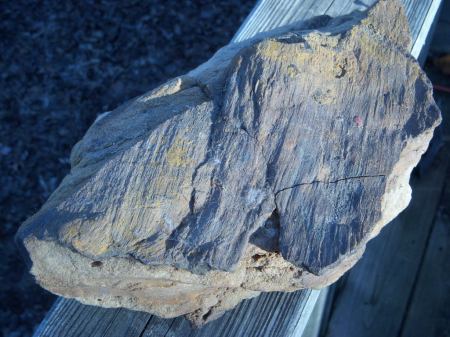
Spam
February 10, 2011Recently, I found about a thousand(yep, 1000) comments awaiting moderation, so I deleted everything. If you made a comment that should be here, post it again.
Isotelus Molts
February 5, 2011Working an outcrop in the Clays Ferry Formation that is in the same bed, and close to, another outcrop that I have collected extensively(see here, here, and here), I came across some curious molts of an Isotelus gigas.
The Clays Ferry Fm was deposited in a relatively shallow subtidal environment, and throughout most of the area, the formation straddles the Mohawkian/Cincinnatian boundary(early Late Ordovician). Due to deposition below wave base in typical weather, most of the fossil are complete and a diverse assemblage can be found in the column.
The Bed form which this piece comes is composed primarily of orthoconic cephalopods, Isotelus, a few bivalves, and an occasion Flexicalymene trilobite.
What I find curious about the molts is found on pygidium and thorax of the smaller dorsal specimen. I have annotated it with a white line to highlight the area.
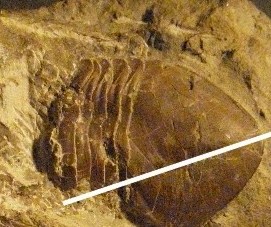
There is a crack and indentation that runs from the anterior posterior(Jeeez, I just caught that) margin through the pygidium, and from there it appears as if it continues on through the pleurons. As there is no suture along that area of the thorax, I would assume that the distal portions of the pleurons would be adjacent to the rest of the critter, but they are not there, So that has left me wondering if the structure is pre-molt, or if it is an artifact of lithification. Any Ideals?
Devonian Tabulate Coral
February 4, 2011A few years ago, I was working a project in northern Jefferson Co. Ky. that was in the preliminary stages of development. As such, the area had been stripped of vegetation leaving a vast field of regolith that was a mud pit when it rained… sticky clayey mud. But, those rains also uncovered thousands of silicified fossils that littered the ground of the project.
One of the larger pieces that I picked up was a head of the tabulate coral Alveolites. It was fossilized as silica replacement that is common of many fossils in the Jeffersonville Limestone.
Name Change
January 16, 2011Since, I live within about 100km of rocks that compose nearly all of the periods of the Paleozoic(Cambrian and Permian being the exceptions), I decided to change the name and to start including some of the other stuff that I have found in my area.
The blog will always focus on Ordovician fauna, but there are some other interesting critters, too.
Cheers, Tim
Another Ordovician Trepostomate
January 11, 2011A while back, while working a rather new outcrop of the Millersburg member of the Lexington, I was having little luck finding anything worthy. So, on a whim, I decided to walk a few hundred meters down the road and about 10m down in the rock column to an outcrop of the Tanglewood member.
The Tanglewood was deposited near shore and above wave base, so the fossils(what few are there) are generally very abraded and of poor quality. But occasionally, I find a lens of mudstone within the Tanglewood that preserves some nice critters.
Unfortunately, this was not to be one of those days. Though, I did find a nice trepostomate bryzoan that I brought home.
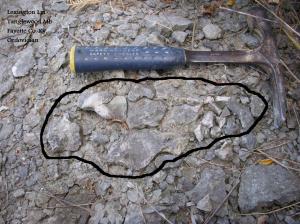
I’m not much on the Bryzoa, but this one appears to be a Heterotrypa sp.
Micro-Bivalve
January 1, 2011A quick post from something on the hard drive…
Often, when inspecting corals(Cnindaria) or sponges(Porifera) that I have found in the Millersburg mb. of the Lexington, I find micro-fossils at the base of the colonies. It could be coincidental, but I’m starting to think that the micros were juveniles and that their progenitor placed the off spring in a habitat that favored survival, or the ones placed there were more likely to survive… which seems more plausible.
Anyway, here is a small bivalve that was collected from just such an environment.
Since the common bivalves from the Millersburg are modiomorphids or ambonychiids, These are probably ambonychiids… probably Bysonnychia sp. juveniles.
